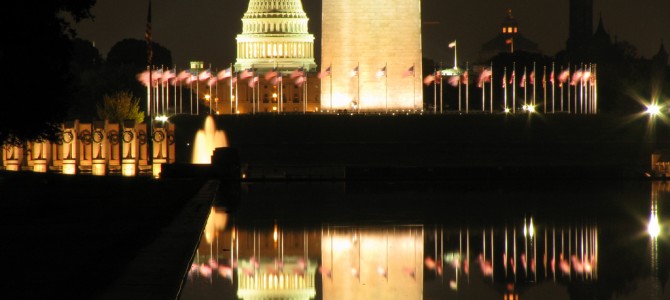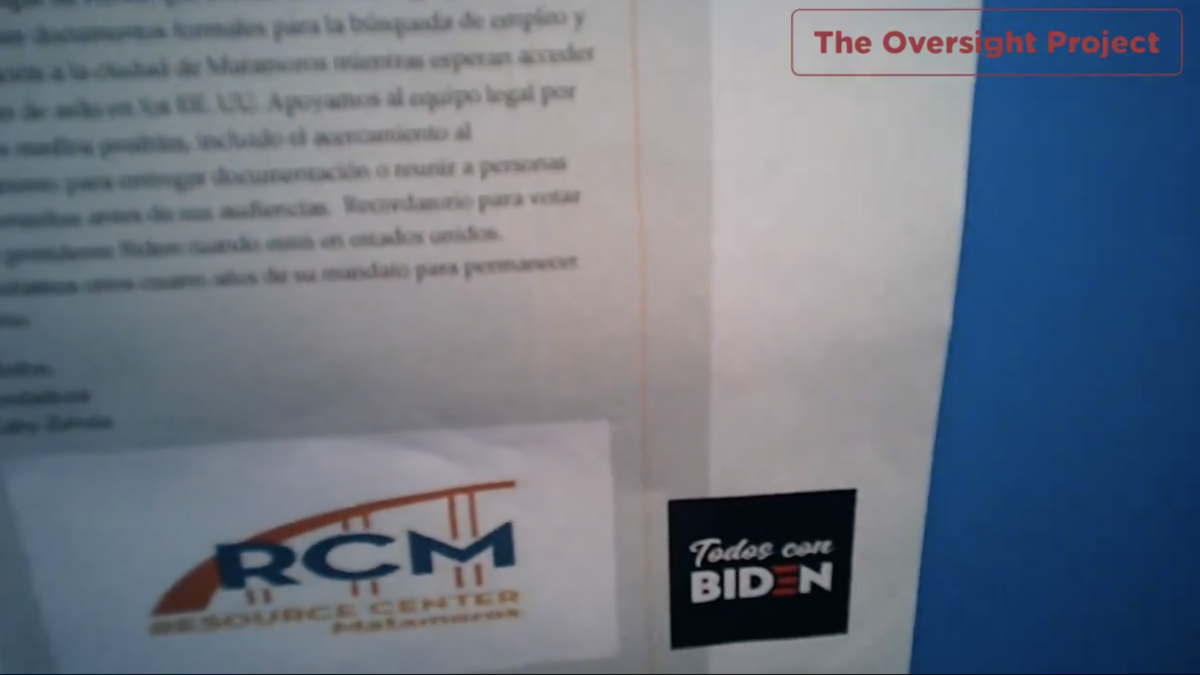
Steven Teles identified an important problem in American government in his essay on “Kludgeocracy in America” (National Affairs, Fall 2013). Government has grown too complicated for citizens to understand. “The complexity and incoherence of our government often make it difficult for us to understand just what that government is doing,” he wrote. Every time you file your taxes, try to figure out which documents to bring to the DMV, or contemplate starting a business, you get some inkling of how maddeningly opaque the government is. Try scanning the lists of federal independent agencies, and boards, commissions and committees to get a sense of how bad it can get.
Complexity is a problem because it imposes high costs on democracy and undermines transparency, accountability, and trust. If we don’t understand what’s going on, we can’t keep government accountable for doing it right. Meanwhile, we pay high costs to figure out what the law is and comply with it, or are made lawbreakers because of our ignorance. Either way, respect for the rule of law, and for government, declines.
Teles recommended some procedural changes to how laws are made (streamlining committees in Congress, revising the filibuster) and sharpening the distinction between federal and state sovereignty to reduce the overlap between the two. These are good ideas, but a simpler and more immediate tool is at hand. Congress can reauthorize the president to reorganize the executive branch of government.
A need for presidential authority
From 1932 to 1984, Congress periodically granted the president authority to reorganize the executive branch. The president was empowered, within limits, to abolish, transfer or consolidate federal agencies, bureaus, and departments. The reorganization authority made sense: the president, as chief executive officer of the government, was responsible for the operations of the executive branch. His job, by definition, was ensuring the efficient operations of the bureaucracy. The CEO of any large business would enjoy a similar prerogative as a matter of course. Presidents regularly made use of the authority, issuing over 100 reorganization plans in the 20th century, as detailed by the Congressional Research Service.
The problem was that, as boring and technical as bureaucratic reorganization sounds, it is intensely political. Federal agencies are sources of jobs and patronage for Congressmen who create them, oversee them, or house them in their districts. And creating an agency is a way of permanently institutionalizing one’s favored agenda because they almost never die: allowing a president to freely consolidate and streamline risks seeing one’s pet agency get swept away.
Another problem was that some presidents used their reorganization authority to create entirely new agencies out of whole cloth. Eisenhower used reorganization plans to create the Department of Health, Education, and Welfare (which later was split into the Departments of Education and Health and Human Services); Nixon created the Drug Enforcement Administration and the Environmental Protection Agency; and Carter, the Federal Emergency Management Agency–all of which suddenly demanded new appropriations from Congress.
But the biggest blow to presidential reorganization authority was a Supreme Court decision in 1983 (INS vs. Chadha) that struck down the procedure by which presidential reorganization plans would automatically become law unless at least one house of Congress objected. That, the Court declared, violated the separation of powers by giving the president too much power over agencies that Congress was responsible for creating and funding.
None of these obstacles are prohibitive. In the past Congress found ways to limit the president’s latitude even as they granted him reorganization authority. In 1939, for example, they specifically protected 21 agencies from the president’s reorganization plans. At times they prohibited the president from abolishing agencies, departments, or functions, or from creating new ones. And in 1984 they found a new process for approving reorganization plans that passed constitutional muster.
Nonetheless, reorganization authority lapsed the year after the Supreme Court’s decision–victim, perhaps, to the growing partisanship and mistrust that started in the mid-80s and continues today. Both parties have recognized the value of presidential reorganization authority. President George W. Bush asked Congress to renew it permanently in 2002 (to give him maximum latitude to reform the intelligence community). The nonpartisan Volcker Commission (the National Commission on the Public Service) recommended the same in 2003, and President Obama made a similar request in 2012.
Given the political environment in which Americans are fed up with the apparent paralysis, waste, complexity, and redundancy in their government, it is possible that a future Congress will re-authorize presidential reorganization authority. Any new grant of authority is likely to be narrow: liberals are likely to prevent the president from abolishing any function of government outright–and conservatives, from creating new ones. With those safeguards in place, both might agree to give the president the power to rearrange, consolidate, streamline, and rationalize what has become the largest, most powerful, and most complex institution ever created in human history. If so, how might the government be reorganized?
The Plan
The Volcker Commission recommended that “programs that are designed to achieve similar outcomes should be combined within one agency,” and “agencies with similar or related missions should be combined in large departments that encourage economies of scale in management, and facilitate responsiveness to political leadership.” Following these principles, the president could consolidate the current cabinet of 15 departments into seven.
First, and most massively, would be a Department of Public Assistance (DPA). DPA would administer all forms of federal assistance to Americans in need, including those who are unemployed, disabled, retired, homeless, poor, in need of health insurance, or veterans. This department would consolidate the Departments of Health and Human Services, Housing and Urban Development, and Veterans Affairs, take over the Supplemental Nutritional Assistance Program (food stamps) from the Department of Agriculture, and subsume the Social Security Administration, the Railroad Retirement Board, (which, oddly, administers a retirement program for rail workers separate from Social Security), the National Council on Disability, the Pension Benefit Guarantee Corporation, and more. DPA would handle all direct cash transfer payments to Americans but would also provide other services, such as the VA’s counseling for Veterans or HUD’s development of affordable housing. It would vastly simplify the sometimes maddening process of accessing government benefits, especially if granted the ability to access applicants’ tax filings for means-testing.
Second would be a Department of Economic Policy (DEP) that would consolidate the Departments of Treasury, Transportation, Energy, Labor, Commerce, Agriculture, as well as the Small Business Administration, the Export-Import Bank, the Overseas Private Investment Corporation, the U.S. Trade and Development Agency, the Farm Credit Administration, the Farm Credit System Insurance Corporation, AMTRAK, the Tennessee Valley Authority, and more. This broad array of agencies have a common goal: fostering national prosperity. Different bureaus would handle different economic sectors (as, today, different departments do), with the benefit of easier coordination between them and a more flexible structure that can drop sectors that may no longer merit their own department (agriculture) and add new ones (the internet). The idea is not too far-fetched: the Departments of Commerce and Labor started life as a single department in 1903, Nixon tried to consolidate a range of economic policy agencies, and Obama’s request for reorganization authority is motivated in part by a plan to do the same.
Parallel to DEP would be a Department of Natural Resources (DNR), which would comprise the current Department of Interior (minus the Office of Insular Affairs), the Environmental Protection Agency (an independent agency), the National Oceanic and Atmospheric Administration (from Commerce), and the Forest Service (from Agriculture). DNR (which Carter proposed in 1978) would be the steward of the nation’s common property, charged with both preserving it and making it available for sustainable use.
The Departments of Defense, Homeland Security, and State can probably remain relatively unchanged (though they can always use some internal streamlining). State should assume control of the Office of Insular Affairs from the Department of Interior, a small office that handles relations with U.S. territories like Puerto Rico and Guam. That function is more akin to diplomacy, at the heart of State’s mission, than environmental protection, at the heart of Interior’s.
Finally, the Department of Justice would preside over a new organization, the United States Police (USP). The federal government has a ridiculously complex and redundant array of law enforcement organizations. USP would result from the merger of as many of them as possible, including the Federal Bureau of Investigations and the Drug Enforcement Administration (whose merger has been proposed before), as well as the Bureau of Alcohol, Tobacco, Firearms, and Explosives, the US Marshals Service, the Pentagon Police, the NSA Police, the DIA Police, the CIA Police (yes, they all have separate police forces), the Federal Protective Service, the Secret Service (at least its counterfeit investigations arm), and more. Among the benefits of this consolidation are the abolition of the FBI and the creation of new TV shows called “USP: New York,” and “USP: LA.”
No easy fix
When the Department of Homeland Security was created, officials discovered that the Immigration and Naturalization and the U.S. Customs Service were so similar in function–monitoring the flow of people and goods, respectively, across U.S. borders–that they simply merged the two agencies. The creation of DHS created the broader framework and clarity of mission needed to see the opportunity for bureaucratic efficiency and streamlining. The same is probably true of some of the ideas above.
Some of these ideas may be overly ambitious or politically infeasible. But it is at least as notably how many of them, including the Department of Natural Resources, the merger between the FBI and DEA, and some consolidation among the agencies of economic policy, have been proposed before. Almost no one will defend the current organizational structure of the federal executive as well-planned and thoughtfully designed. It clearly needs streamlining. Congress is not the right authority to do it, both because it is a separate branch and because reorganization by committee is just a dumb idea. This is one area in which greater presidential authority would actually improve government and put taxpayers dollars to better use.







